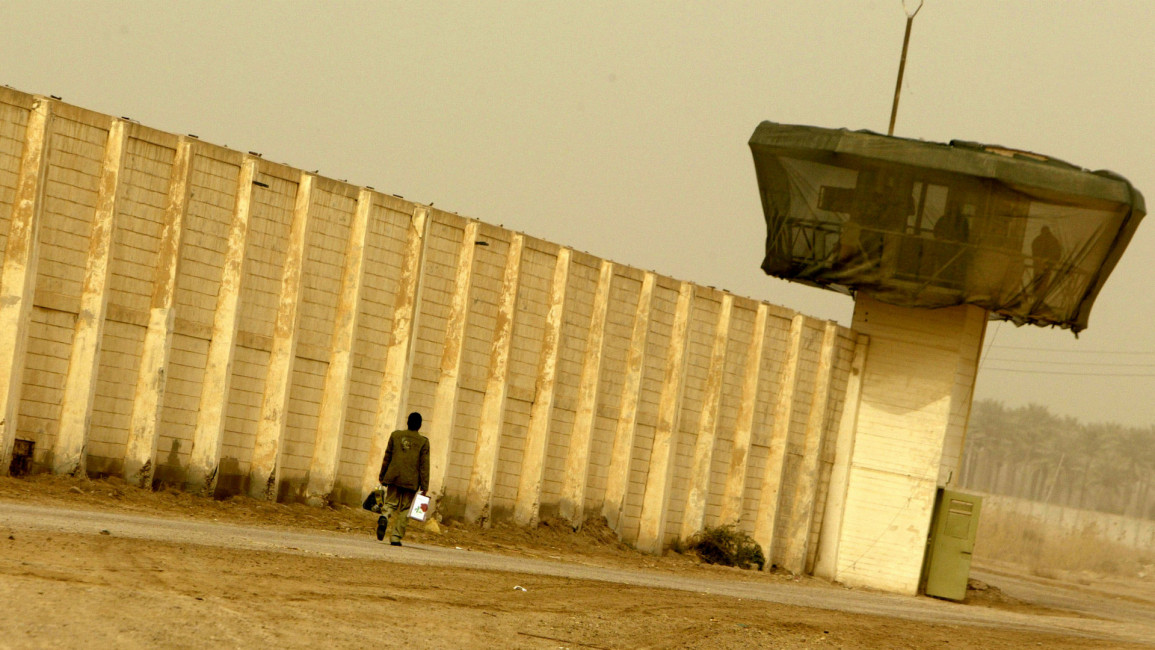Iraq abuse photos must be released, orders US judge
Iraq abuse photos must be released, orders US judge
The US government has been told it has to release a trove of photos documenting degrading treatment and potentially torture of detainees in Iraq and Afghanistan.
3 min read
Previous misdeeds behind the walls of prisons like Abu Ghraib still blight America's reputation (Getty)
A vault of some 2,000 images depicting abuse and possibly torture of people detained by United States troops in Iraq and Afghanistan must be opened to the public, a US judge has ruled.
The photos have been at the centre of a decade-long legal battle. In this most recent twist, the government has been given two months to decide how to respond before the photos could finally see the light of day.
The case was brought by the American Civil Liberties Union (ACLU), which argued that the release of the photos was necessary for the "ongoing national debate about governmental accountability for the abuse of prisoners".
Many of the photos were taken by US service personnel serving in Iraq and Afghanistan, and the government has resisted their release on the grounds that they could create a violent backlash and put American lives at risk.
| Giving the government that kind of censorial power would have implications far beyond this specific context |
The Bush and Obama administrations have both fought to ensure the ACLU's Freedom of Information Act request be denied.
Lawmakers even changed the FOIA law in 2009 to allow the US secretary of defence to withhold documents deemed to endanger US personnel.
However, US district judge Alvin Hellerstein ruled on Friday that the government was required to disclose "each and all of the photographs" because it had not adequately proved that the "disclosure would endanger Americans".
ACLU deputy legal director Jameel Jaffer responded to the ruling.
"To allow the government to suppress any image that might provoke someone, somewhere, to violence would be to give the government sweeping power to suppress evidence of its own agents' misconduct," he said.
"Giving the government that kind of censorial power would have implications far beyond this specific context."
Tarnished legacy
Evidence of torture and abuse at the hands of US security personnel continue to tarnish the legacy of the "War on Terror" and the occupations of Iraq and Afghanistan.
Some of the disclosed photos are believed to be more damning than the pictures that gave rise to the Abu Ghraib scandal.
Pictures leaked from the US-run prison in Iraq of naked detainees being dragged around on leashes or masked and wired to electric cables are among the most enduring images from the campaign.
Between 2004 and 2006, 11 soldiers - including Lynndie England, who was seen smiling beside naked prisoners being subjected to sexual abuse - were convicted in courts martial.
While some relatively junior soldiers have been punished, there have been few efforts to hold to account senior personnel who crafted and oversaw the detention, rendition and interrogation programmes.
Only last December, the US Senate Intelligence Committee released a damning report, chronicling a litany of abuse and "enhanced interrogation techniques" employed by the CIA including forced rectal feeding, mock executions, simulated drowning and standing on broken limbs.
At a time when the US is re-entering some of the conflicts wracking the region, further revelations over its previous misconduct threaten to sully its already blemished reputation.


![The White House Correspondents' dinner is seeing renewed scrutiny amid Israel's war in Gaza. [Brooke Anderson/The New Arab]](/sites/default/files/styles/image_330x185/public/2024-04/IMG_5497.jpg?h=71976bb4&itok=iSygAqbR)